Features & Specs
- Introduction
- Features
- Specifications
- Option
Features
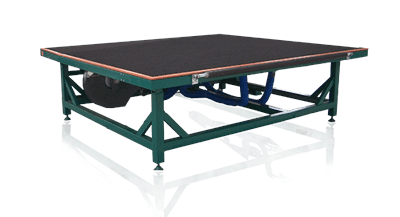
Loading Table
Glass rack is placed next to this loading table. There are many small holes on the loading table and a blower underneath the table creates an air cushion on the table surface through the holes. The top piece of glass is then fall from the glass rack onto the loading table. The operator then moves the glass onto the template-cutting machine easily with the help of air cushion.
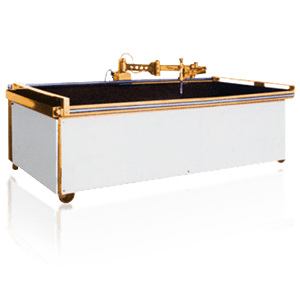
Template Cutting Machine
This is the machine suitable for shape glass cutting. There is a piece of wooden template with internal shape identical to the shape of the glass that is to be cut. A blower is placed underneath the machine and it is used to create air cushion on the table surface through many small holes. The glass is moved from the loading table onto this cutting machine easily by floating on the table surface. When the glass is in position, air blower reverses rotating such that vacuum is created to “suck” the glass. This holds glass firmly in position during cutting. There is a cutting head with a ring right above and also a hinge on the top connecting to a long handle. The ring is against the internal rim of the wooden template. Operator holds the handle and turns to move it around the internal rim of the template. It then scores on glass surface the requested shape by means of pneumatic. By pressing a button, the blower reverses rotating again to create air cushion on table surface such that the glass is easily floated and moved onto subsequent breakout table.
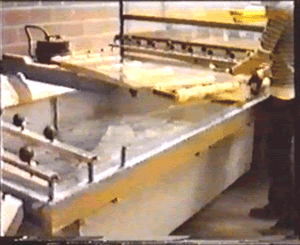
Breakout Table
After the glass is cut, it is moved to this table for manual breakout. It is a metal structure with ball castors on the upper section and a cullet trash on the bottom. The castor ball structure is freely self-rotated. This is very convenient for operator to rotate glass during breaking out. Surplus glass is fallen down into the trash. Then the glass is moved onto the downstream sand belt seaming machine.
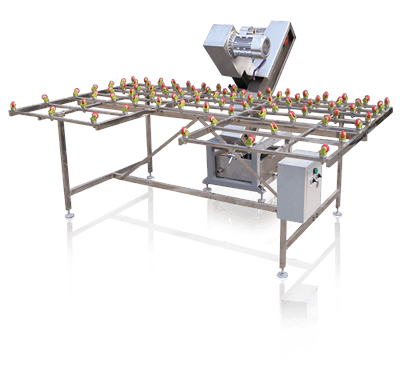
Twin Belt Seaming Machine
It has two pieces of sand belts cross at 45 degrees to each other. The glass is moved around on a ball castor table and the glass rim is pushed against the cross sand belts such that the two glass arris are seamed at the same time. There is a water system to cool down the belt and meanwhile, wash the glass powder away. After the grinding is completed, glass is moved to the inlet of the washing machine.
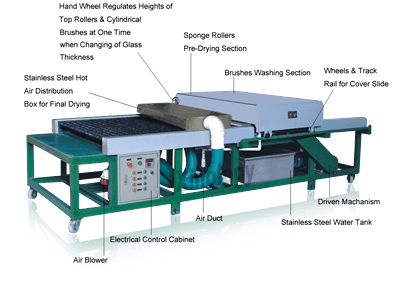
Horizontal Washing & Drying Machine
GWD-H-G series of glass washing and drying machine is suitable to wash and dry both top and bottom glass surface. This budget washing machine is in compact design and occupies little space. Glass washing is done by cylindrical brushes. Pre-drying is done by high efficient sponge rollers followed by hot air generated by air blower. It is very easy to operate and maintenance friendly. Other types of high performances glass washing machines are available on request.
Powder Applying Machine
This machine is a box above the rollers with a powder silo located next to it. After the glass is dried, it enters through motorized rollers onto this machine. A blower creates an air current acting on the powder such that the powder is blown up inside the box and then fall down to create thin layer of powder on the top surface of the glass by means of gravity. The glass then exits out and ready for unloading.